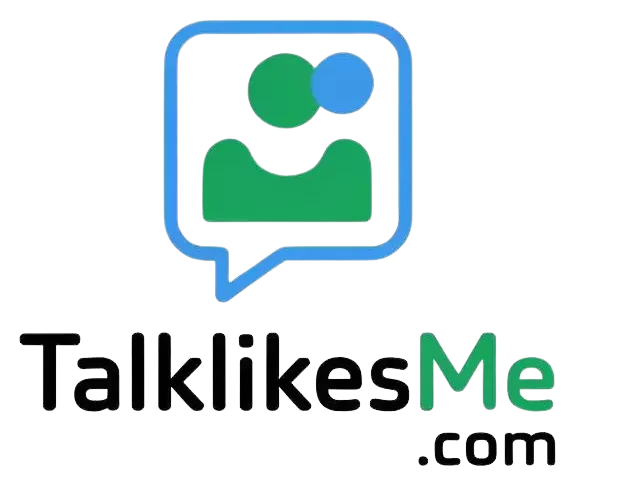Imagine you’re at a party, and a friend playfully teases you about something outrageous. They say with a grin, “Oh, come on, I’m just pulling your leg!”
In moments like these, it’s not just about the joke—it’s about how you respond. A witty comeback can turn a playful tease into a fun exchange and show your quick thinking.
Having a few clever responses ready can make these moments more enjoyable and keep the humor rolling.
Let’s explore some comebacks you can use when someone is “pulling your leg.”
1. “Oh, I knew you were just kidding! You’re not fooling me.”
You acknowledge the tease and show that you’re not easily tricked.
Example: “Oh, I knew you were just kidding! You’re not fooling me.”
When to use: When you want to play along with the joke and show you’re not gullible.
When not to use: If you feel the tease is crossing a line or if you’re not in the mood for jokes.
2. “Really? I thought I’d never get caught! Nice try, though.”
You playfully admit to being “tricked” while complimenting their effort.
Example: “Really? I thought I’d never get caught! Nice try, though.”
When to use: When you want to acknowledge the joke and make it clear you’re enjoying the banter.
When not to use: If you want to avoid engaging in the joke further.
3. “Oh, I see you’ve been practicing your leg-pulling skills!”
You turn the tease into a compliment about their joke-telling skills.
Example: “Oh, I see you’ve been practicing your leg-pulling skills!”
When to use: When you want to compliment their humor and keep the conversation light.
When not to use: If you don’t want to continue the playful exchange.
4. “Ah, the classic leg-pulling move! You’re a pro at this.”
You playfully acknowledge their teasing ability and add some humor.
Example: “Ah, the classic leg-pulling move! You’re a pro at this.”
When to use: When you want to recognize their playful attempt and engage in the joke.
When not to use: If you prefer to change the topic.
5. “You’re good at this! I almost believed you.”
You compliment their teasing while showing that you were almost convinced.
Example: “You’re good at this! I almost believed you.”
When to use: When you want to praise their teasing skills and keep the conversation fun.
When not to use: If you don’t want to encourage more teasing.
6. “I guess I’ll have to keep my guard up around you!”
You acknowledge their joke and humorously suggest you’ll be cautious in the future.
Example: “I guess I’ll have to keep my guard up around you!”
When to use: When you want to playfully respond and suggest you’re aware of their teasing.
When not to use: If you’re not in the mood for more jokes.
7. “Nice try, but I’m onto you!”
You acknowledge their attempt at teasing while making it clear you’re not fooled.
Example: “Nice try, but I’m onto you!”
When to use: When you want to play along but show that you’re not easily tricked.
When not to use: If you don’t want to engage further.
8. “I should have known! You’re always full of surprises.”
You playfully admit that you expected their tease and compliment their creativity.
Example: “I should have known! You’re always full of surprises.”
When to use: When you want to acknowledge their humor and engage in the joke.
When not to use: If you prefer to avoid more teasing.
9. “Is that your best shot? I’m unimpressed!”
You playfully challenge their teasing skills and keep the mood light.
Example: “Is that your best shot? I’m unimpressed!”
When to use: When you want to continue the playful banter and challenge them.
When not to use: If you want to end the teasing.
10. “You’ve got to do better than that to fool me!”
You humorously challenge their attempt and express that they need to try harder.
Example: “You’ve got to do better than that to fool me!”
When to use: When you want to continue the playful exchange and keep the humor alive.
When not to use: If you prefer to shift the conversation.
11. “Good one! I’ll have to watch out for you.”
You compliment their joke and humorously suggest you’ll be more cautious.
Example: “Good one! I’ll have to watch out for you.”
When to use: When you want to acknowledge their joke and keep the mood light.
When not to use: If you’re not interested in more playful teasing.
12. “I see what you did there! You’re a master of leg-pulling.”
You recognize their skill in teasing and compliment them.
Example: “I see what you did there! You’re a master of leg-pulling.”
When to use: When you want to appreciate their teasing and continue the fun.
When not to use: If you want to avoid further teasing.
13. “You almost had me! I’m too wise for that trick.”
You acknowledge their attempt and humorously brag about your awareness.
Example: “You almost had me! I’m too wise for that trick.”
When to use: When you want to show that you’re aware of the tease and keep it playful.
When not to use: If you prefer to end the joke.
14. “I should have known better! You’re quite the joker.”
You admit that you should have expected their tease and compliment their humor.
Example: “I should have known better! You’re quite the joker.”
When to use: When you want to acknowledge their joke and keep the mood light.
When not to use: If you’re not in the mood for more banter.
15. “You’re quite the leg-puller! I’ll give you that.”
You humorously acknowledge their skill in teasing.
Example: “You’re quite the leg-puller! I’ll give you that.”
When to use: When you want to appreciate their humor and engage in the joke.
When not to use: If you want to change the subject.
16. “Oh, so that’s how it is! You’re really trying to fool me.”
You playfully acknowledge their attempt and express surprise.
Example: “Oh, so that’s how it is! You’re really trying to fool me.”
When to use: When you want to continue the playful exchange.
When not to use: If you’re not interested in more teasing.
17. “Nice try! But I’ve heard better leg-pulling before.”
You playfully challenge their tease and keep the humor going.
Example: “Nice try! But I’ve heard better leg-pulling before.”
When to use: When you want to keep the playful banter alive.
When not to use: If you want to end the conversation.
18. “Oh, you’re pulling my leg again! You’re really on a roll.”
You acknowledge their tease and humorously suggest they’re on a streak.
Example: “Oh, you’re pulling my leg again! You’re really on a roll.”
When to use: When you want to engage in the joke and keep it fun.
When not to use: If you prefer a more serious response.
19. “You’re getting good at this! I almost fell for it.”
You compliment their teasing skills while acknowledging their attempt.
Example: “You’re getting good at this! I almost fell for it.”
When to use: When you want to appreciate their humor and keep the joke going.
When not to use: If you’re not interested in more teasing.
20. “Ah, you’re at it again! Can’t wait to see what you come up with next.”
You playfully acknowledge their ongoing teasing and express anticipation for more.
Example: “Ah, you’re at it again! Can’t wait to see what you come up with next.”
When to use: When you want to continue the playful exchange.
When not to use: If you prefer to end the banter.
21. “You’ve got to be kidding me! Or maybe not?”
You playfully question their tease while keeping the humor alive.
Example: “You’ve got to be kidding me! Or maybe not?”
When to use: When you want to engage in the joke and keep it light-hearted.
When not to use: If you want to avoid further teasing.
22. “Is that all you’ve got? I’m not falling for that.”
You humorously challenge their teasing and show that you’re not easily fooled.
Example: “Is that all you’ve got? I’m not falling for that.”
When to use: When you want to play along and challenge their tease.
When not to use: If you prefer to change the topic.
23. “I’ve heard that one before! You’re getting predictable.”
You playfully acknowledge that their tease is not new to you.
Example: “I’ve heard that one before! You’re getting predictable.”
When to use: When you want to continue the playful banter and keep it fun.
When not to use: If you’re not interested in more teasing.
24. “Oh, you’re really pulling my leg now! Good one!”
You acknowledge their tease and compliment their effort.
Example: “Oh, you’re really pulling my leg now! Good one!”
When to use: When you want to appreciate their humor and keep the mood light.
When not to use: If you want to end the joke.
25. “You’re really on a roll with these leg-pulling jokes!”
You recognize their continued teasing and humorously acknowledge their efforts.
Example: “You’re really on a roll with these leg-pulling jokes!”
When to use: When you want to keep the playful exchange going.
When not to use: If you prefer to shift the conversation.
26. “Oh, so that’s your trick! I’m not falling for it.”
You acknowledge their teasing attempt while humorously stating that you’re not fooled.
Example: “Oh, so that’s your trick! I’m not falling for it.”
When to use: When you want to play along and show that you’re aware of their tease.
When not to use: If you want to avoid further joking.
27. “You’ve been practicing, haven’t you? Nice leg-pulling!”
You humorously acknowledge their skill in teasing and compliment them.
Example: “You’ve been practicing, haven’t you? Nice leg-pulling!”
When to use: When you want to appreciate their humor and keep the joke going.
When not to use: If you’re not interested in more teasing.
28. “Oh, you got me! Or did you? I’m not sure now.”
You playfully admit to being “tricked” while expressing doubt about their tease.
Example: “Oh, you got me! Or did you? I’m not sure now.”
When to use: When you want to keep the humor alive and engage in the joke.
When not to use: If you prefer to end the playful exchange.
29. “Nice try! I’m pretty good at spotting leg-pullers.”
You humorously compliment their attempt while boasting about your own awareness.
Example: “Nice try! I’m pretty good at spotting leg-pullers.”
When to use: When you want to play along and show that you’re not easily fooled.
When not to use: If you prefer to change the topic.
30. “Oh, I see what you did there! I’m onto your tricks.”
You acknowledge their tease and humorously express that you’re aware of their attempts.
Example: “Oh, I see what you did there! I’m onto your tricks.”
When to use: When you want to engage in the joke and keep it light-hearted.
When not to use: If you’re not interested in more teasing.
Top 10 Editor Choice Responses
- “Oh, I knew you were just kidding! You’re not fooling me.”
- “Really? I thought I’d never get caught! Nice try, though.”
- “Oh, I see you’ve been practicing your leg-pulling skills!”
- “Ah, the classic leg-pulling move! You’re a pro at this.”
- “You’re good at this! I almost believed you.”
- “I guess I’ll have to keep my guard up around you!”
- “Nice try, but I’m onto you!”
- “I should have known! You’re always full of surprises.”
- “Is that your best shot? I’m unimpressed!”
- “You’ve got to do better than that to fool me!”



